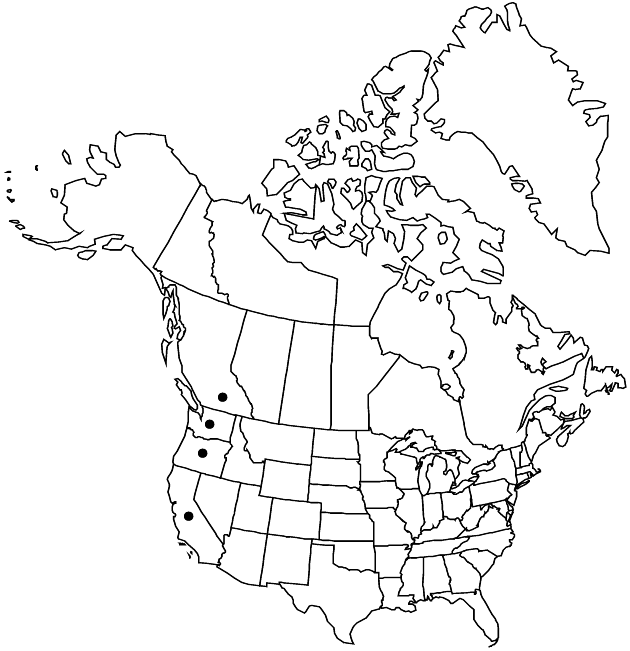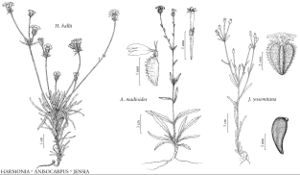Anisocarpus madioides
Trans. Amer. Philos. Soc., n. s. 7: 388. 1841.
Plants 15–80 cm. Leaf blades dark green, 40–130 × 5–15 mm, margins entire or toothed, apices acute. Involucres ± globose, 4–6 mm. Ray florets 7–15. Disc florets 5–30, functionally staminate. Ray cypselae compressed, 3–5 mm. Disc pappi 5–8 linear, lanceolate, or quadrate, fimbrillate or erose scales 0.2–1.5 mm. 2n = 14.
Phenology: Flowering Apr–Sep.
Habitat: Forests, woodlands
Elevation: 10–1300 m
Distribution

B.C., Calif., Oreg., Wash.
Discussion
Like some other self-compatible tarweeds, Anisocarpus madioides ranges beyond the California Floristic Province and is the most widespread perennial in Madiinae. It occurs in the Pacific coast ranges from central California (Santa Lucia Range) north to Vancouver Island, British Columbia; outliers include populations in the Feather River region of the northern Sierra Nevada and in the Agua Tibia Mountains of southern California.
Selected References
None.
